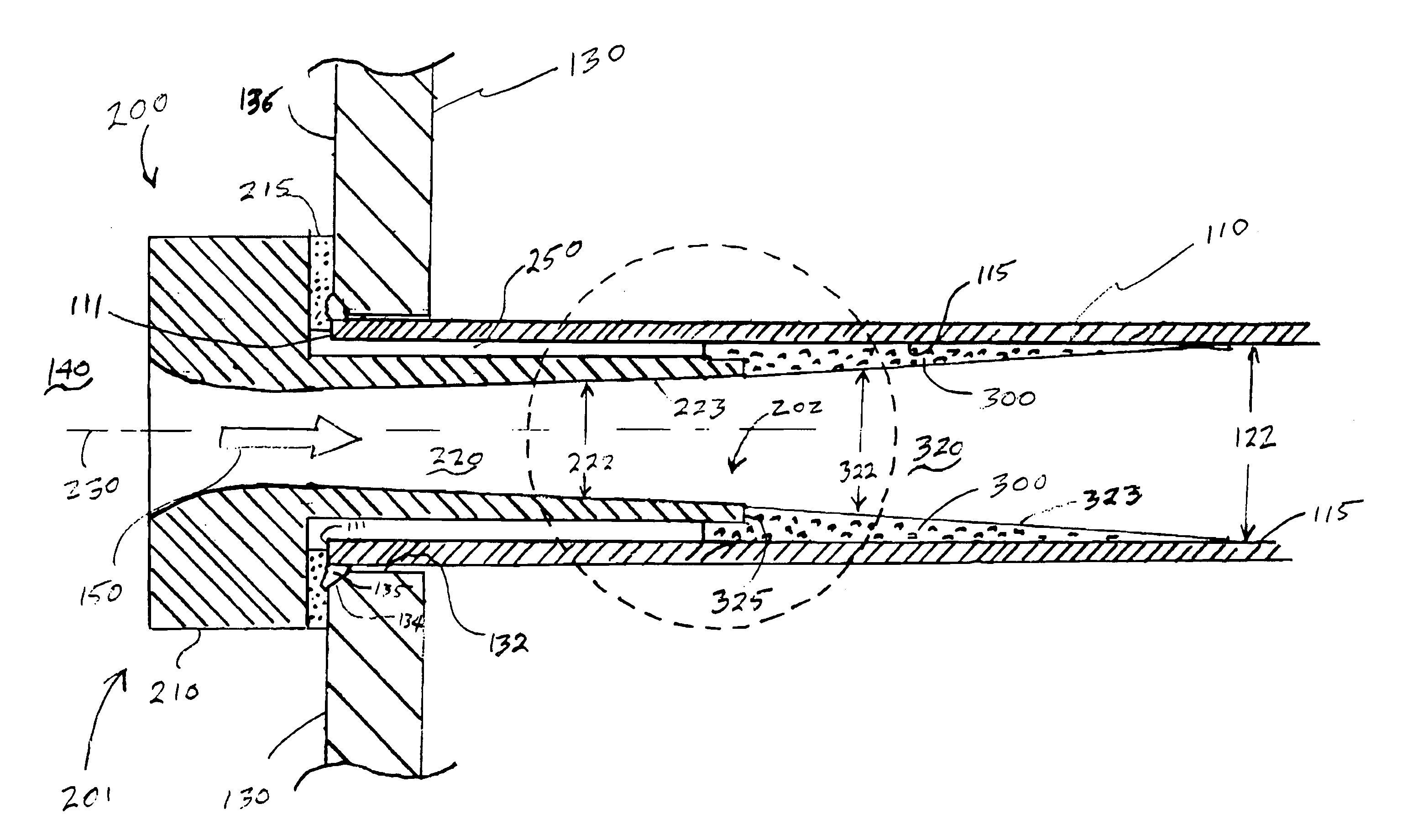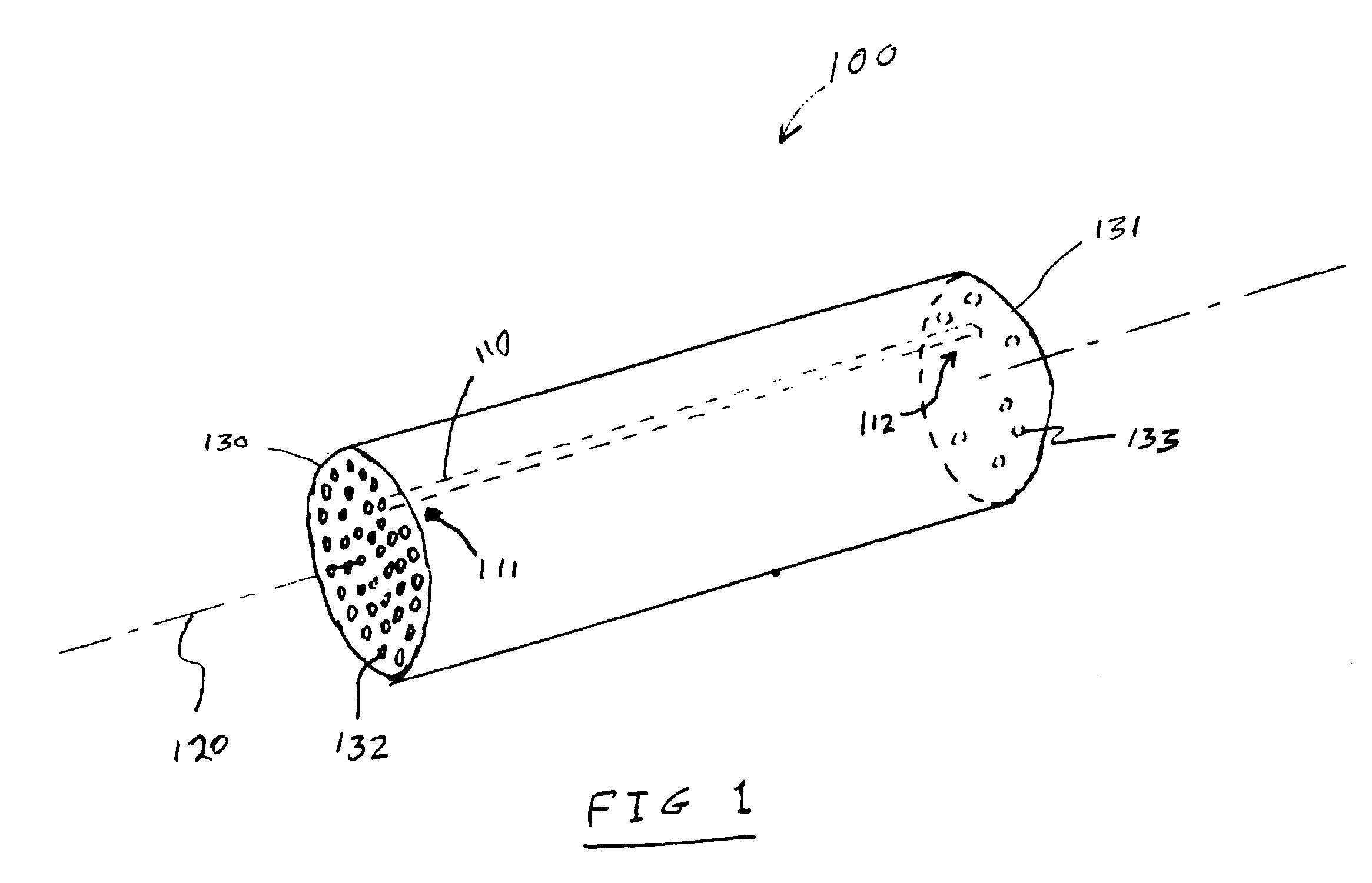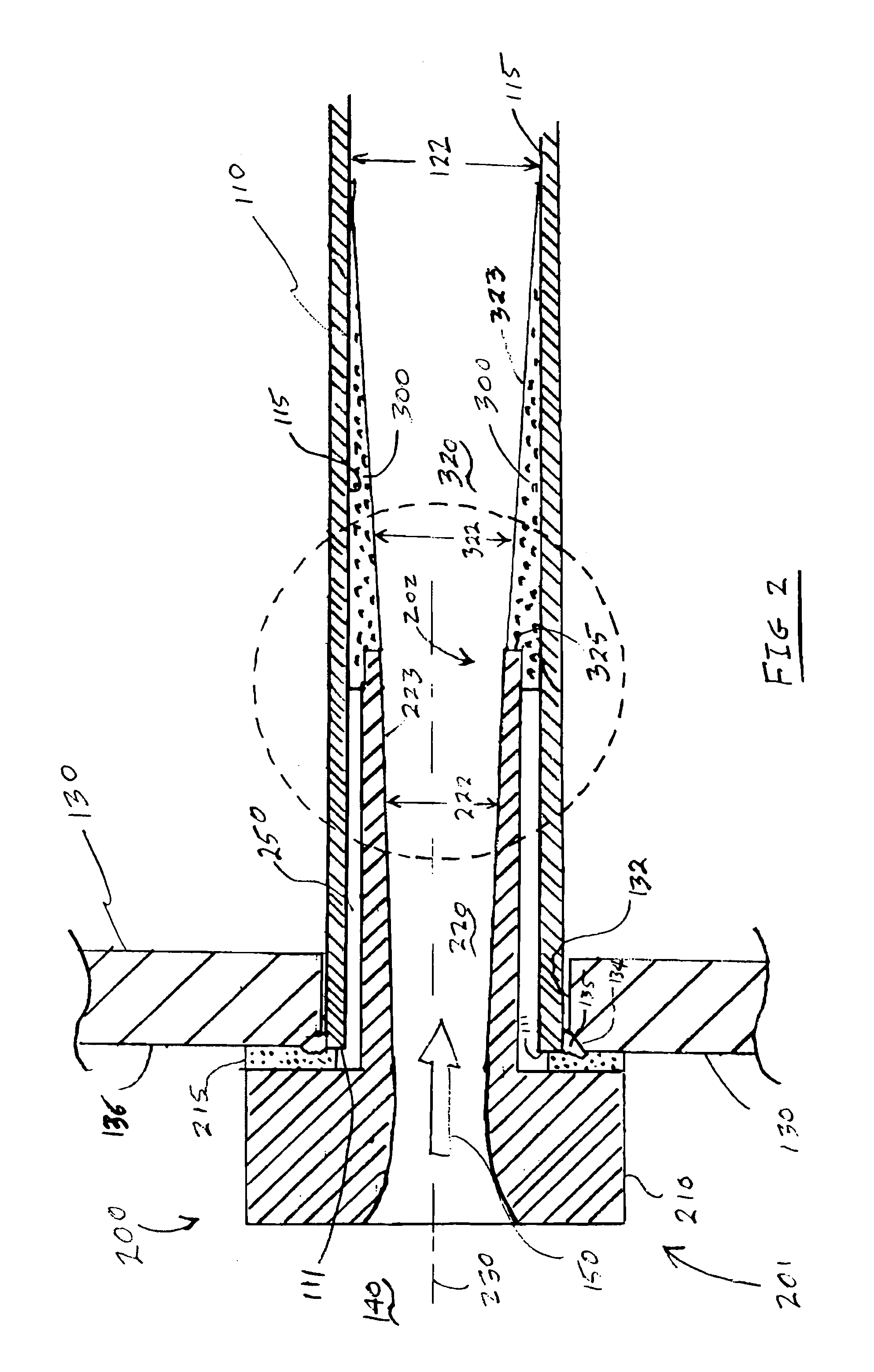Apparatus and method for improving the durability of a cooling tube in a fire tube boiler
- Summary
- Abstract
- Description
- Claims
- Application Information
AI Technical Summary
Benefits of technology
Problems solved by technology
Method used
Image
Examples
Embodiment Construction
[0021]The following detailed description is of the best currently contemplated modes of carrying out the invention. The description is not to be taken in a limiting sense, but is made merely for the purpose of illustrating the general principles of the invention, since the scope of the invention is best defined by the appended claims.
[0022]Broadly, the current invention includes systems, devices, and methods for reducing turbulence within a hot fluid flowing through a cooling tube end and increasing the durability of the cooling tube. The invention includes a cooling tube with an internal, corrosion-resistant overlay positioned proximate the tube end so that it receives an end of a protective ferrule inserted into the tube end. The method of internally applying the internal overlay within the tube end is considered to be unique to the invention. The ferrule and internal overlay may be tapered from the ferrule end to the interior tube wall to provide a smooth flow path and smooth tra...
PUM
 Login to View More
Login to View More Abstract
Description
Claims
Application Information
 Login to View More
Login to View More - R&D
- Intellectual Property
- Life Sciences
- Materials
- Tech Scout
- Unparalleled Data Quality
- Higher Quality Content
- 60% Fewer Hallucinations
Browse by: Latest US Patents, China's latest patents, Technical Efficacy Thesaurus, Application Domain, Technology Topic, Popular Technical Reports.
© 2025 PatSnap. All rights reserved.Legal|Privacy policy|Modern Slavery Act Transparency Statement|Sitemap|About US| Contact US: help@patsnap.com



